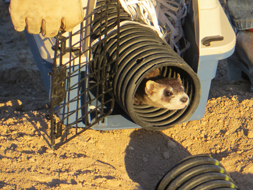Page Content

Why Are Natural Factors a Challenge?
Certain plant and animal species are by nature vulnerable to any type of disturbance of their natural habitat.
What Are Some Examples?
Human interference: Recreation, development.
Shifting habitats of other wildlife and subsequent increased competition.
Nest predation.
Climate change.
What Are The Effects?
What Are Some Of The Things CPW Is Doing?
As habitats grow smaller and become disconnected, the genetic diversity of wildlife populations diminish, and they can become especially vulnerable to disruptive weather events, disease, and genetic mutations. Such is the case with the
lesser prairie-chicken and their grassland home. Through a four-year translocation effort, CPW is bringing lesser prairie-chickens from Kansas to southeast Colorado to form new leks (mating groups) and augment existing leks, all the while boosting resilience and genetic diversity these populations.

Most of Colorado’s threatened plants are naturally rare, meaning they are naturally restricted to very specific, narrowly distributed habitats. CPW is home to the only program in Colorado that monitors and conserves these important plants-- the
Colorado Natural Areas Program.
Due to the bottleneck in
black-footed ferret populations in the late 1970’s, this species suffers from diminished genetic diversity and increased susceptibility to disease like the sylvatic plague. Following reintroduction efforts at six sites in Colorado, CPW is studying the disease in these isolated populations in hopes of developing a better vaccination system and improving the genetic diversity of the state’s populations.

